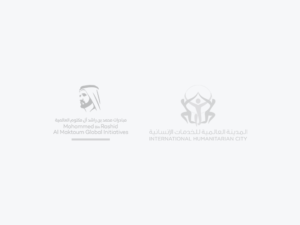Emergency Response Amid Super-Typhoon In Philippines
As the number of affected people in the Philippines continues to rise, humanitarian assistance shipped out from the UAE pours into remote regions devastated by super-typhoon Haiyan, also known as Yolanda locally. To date, over 1500 metric tons of relief supplies from stockpiles of various UN agencies and international NGOs have been sent from the warehouses of the International Humanitarian City (IHC).
Over the past two weeks, members and partner organizations of IHC have been employed heavily in operations for the victims of typhoon Haiyan, thought to be the deadliest typhoon to hit the Philippines since typhoon Thelma killed an estimated 8,000 people in 1991. Having displaced more people than any other Philippines natural disaster in recent decades, Haiyan is said to have been one of the strongest tropical cyclones ever to hit land, with a disputed strength of 150-195 m.p.h.
According to a report published by the United Nations Office for the Coordination of Humanitarian Affairs (UNOCHA), as of November 22, the latest Government estimates indicate that 13.25 million people were affected by the typhoon, including 5.4 million children, many of whom face serious protection, health and safety risks. The figure also includes over 4.4 million displaced people living outside evacuation centers; 387,450 are living in 1,552 centers. Out of the 4.4 million displaced, over 1 million are estimated to be children.
Since the beginning of the disaster, stocks and trucks carrying emergency relief goods have left IHC, and aircraft from Dubai have delivered items in Cebu, Manila, Leyte and Tacloban where operational hubs for relief have been set up to facilitate distribution.
The United Nations Humanitarian Response Depot (UNHRD) has dispatched USD 4.8M worth of emergency relief goods through a total of 59 consignments on behalf of 18 partners including The United Nations World Food Programme (WFP), Irish Aid, the World Health Organization (WHO), Save the Children, Action Contre La Faim, Catholic Relief Services, Cooperazione Italiana, Solidarities International, Handicap International, World Vision, Shelter Box, JICA, Islamic Relief, Norwegian Church Aid, Actaliance, Intersos, and Asean. Items sent include food, medical supplies, shelter, water & sanitation kits, telecommunication and support equipment.
The Dubai global logistics office of the International Federation of the Red Cross and Red Crescent Societies (IFRC) dispatched two Boeing 747 aircrafts financed by the British Department for International Development (DFID) to Cebu. The consignments included rescue vehicles, tarpaulins, hygiene parcels and jerry cans with a total value of USD 579,500. An additional Boeing B747 aircraft was sent out on Monday with 357 CBM and 51 MT with rescue vehicles, hygiene parcels and jerry cans with a total value of USD 393,500.
The Dubai Supply Office of the United Nations Refugee Agency (UNHCR) sent six emergency flights from DWC, Abu Dhabi and Dubai Airports to the Philippines. These flights airlifted more than 600 metric tons of relief supplies of mainly family tents, blankets, plastic tarpaulins, water jerry cans, kitchen sets, as well as five vehicles with communication equipment. The total value of the relief supplies which were airlifted from Dubai has exceeded USD 4M. The first airlift arrived on 14th November to Mactan International Airport in Cebu City. Presently, UNHCR Field Staff are distributing relief items to typhoon survivors in Tacloban’s San Jose and Bagacay areas, and in Tanauan.
Humanitarian workers in the field have struggled to deliver the much needed assistance on the ground. It has been reported that delivery and large-scale distribution only began the seventh day after the storm because many areas were inaccessible. While life-saving operations are expanding and access conditions continue to improve, extensive wreckage leaves roads to remote areas extremely difficult to access. Evacuation centers are overcrowding, and shelter materials are still running short.
IHC and its members are committed to strengthening measures to reach the typhoon victims and help build resilience in their devastated communities.







